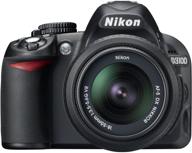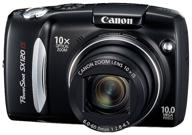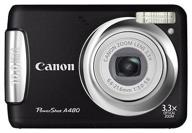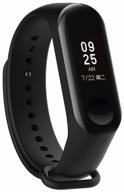- dual pixel
- Management after the five - a step back. Focus sensors are concentrated in the center.
- Swivel screen, weight, price
- All the rest! If you take a camera to a novice photographer or just an amateur who wants to shoot on FF, it may not be a bad option, especially if there is already a fleet of canon optics. I highly recommend for everyday work! The main, huge minus is micro-lubrication by 30% -50%, on the 3rd grade it was no more than 10% with similar shooting in the studio, the optics are identical, like the settings, I don’t argue, there are more pixels, but at shorter shutter speeds the story is similar! My partner also had 6dmrII, they took it on the same day, the situation is similar. Past the focus of 2-3 out of 10, DD, well, I can’t say that it’s straight horror, but it’s no worse than mark 3, but I didn’t pull straight for 100 stops, I’m trying to immediately do the norms in the world! I sold it after 2 months and to be honest, I was extremely happy about it, I had a similar state when I got rid of 6D, I won’t fall for this series again in my life, I thought 6d mrII is a work on the bugs, nope, everything is the same, but with new chips for an amateur ! I took the mark IV with an even larger matrix and Oh, MIRACLE! marriage is 10%, there is almost no micro-lubrication 5-10 out of 100, the focus compared to 6d mark 2 is just fantastic, like the camera itself, and most importantly this is control, after not up to the camera, just a buzz!
- Color fidelity, folding screen, made in Japan, great selection of compatible lenses. Excellent energy efficiency, especially when shooting with the viewfinder. For a vacation away from civilization, the main one and 2 more batteries for 2 weeks are enough to not think about saving charge. On a mirrorless camera, you can carry 20+ batteries with you, and even at the airport they may not understand.
- The shutter button is less comfortable and less crisp than the 10+ year old 50D. DD in many cases requires a particularly careful choice of settings. HDR is not calm in the presence of vegetation, rain, etc. - not an option.
- Swivel screen, dual pixel af, autonomy
- Sensor dynamic range
- of the advantages only the nameplate Kenon
- the auto focus on the photo corrections in the settings does not work very well, the picture is not very good, it seems that old stuff in puffs was thrown into the new case .
- - swivel touch screen - work at high ISO -timelapse 4k - autonomy -ergonomics -functionality
- -price
- 1. Folding screen. 2. Improved ergonomics. 3. The picture is slightly better than 6D in close-ups.
- I mainly do videography. Minuses: 1. Video stabilizer is just digital stretching of the picture. Terrible. 2. Periodically does not want to work with flash drives. You have to take it out and put it back in. 3. Also sometimes does not want to see branded batteries. 4. There is no indication on the screen of the sound level in automatic mode. You can screw up the shooting, because. there is no connection of headphones to check the sound recording either! 5. On the general plans, everything is still soap. Especially with leaves. 6. Beware! You can screw up the reportage shooting. There is no information on the screen about the remaining space on the flash drive when shooting a video. Even on the first version of 6D, it was possible to find out how much space was left. 7. The video has become worse in sharpness. So far I’m sinning on the lens, but I feel that the problem is in the camera. Sharply like this, the lens, in theory, cannot deteriorate when switching from one model to another. 8. Autofocus area constantly makes you look at the screen and control. The subject moves a little - and goes out of the autofocus zone. Also, out of the blue, sometimes autofocus can lose a standing object. 9. Useful functions that have long been implemented by competitors in this price segment have not appeared. For example, check the correct focus during video recording by magnifying the picture on the screen or showing the edges of sharpness with a zebra. 10. There is no 2K, much less 4K. 11. There is always no sound in the video file on the last frame. 12. When buying, there may be a non-native battery.
- -Convenience, the overall feeling after use is only positive. -Working autofocus, -Ergonomics, -Large selection of lenses, both new and used. -Battery is holding up well -The rotary touch screen is simply gorgeous), after it it's not so convenient at 5k. -Good work at high ISO. -Good build. Dualpixel is great. The menu is clear and everything is within easy reach. In general, a solid second 6k, but for so many years they could have added more. I have been using it since the beginning of September, so far I like it.
- -DD. comparable with 5d mark 3, pushed them head-on, in different situations somewhere better 3 marks, somewhere 6dm2 and then the difference is minimal (a couple of percent). With 6dm2 I liked the picture much more often. In general, you need to work on the frame so that there are no powerful dips in the shadows. If there is no time, then it forgives 2 or 3 steps. and I probably won’t write about the fact that I’m shooting at some kind of transcendental ISO and complaining about it, and it’s clear. ISO calmly raises up to 3200. At the ISO itself, it stands up to 3200 when reporting on a car. You can raise it higher, but this is a completely different story in other situations) The result - DD is in order, they inflated the problem due to the fact that they expected more for so many years and a completely new matrix. -1 slot for sd, I had to take several 16GB cards for it, so that in case of data loss from one card, not to lose everything from the shooting. - No 4K video, not critical, if I shoot it only in Full hd. Rendering 4k is not a frail task for a PC. Is that from 4k to full hd and the quality will increase. But if there is a time-lapse in 4k, then why not add it to the video, it certainly won’t be superfluous. - The SD slot, or rather its stub, does not feel very reliable. - AF points close to center "-".98% viewfinder coverage, 2% is not critical at all. - 1/4000 shutter speed, but I would like 1/8000, you rarely use it, but when there is something calmer *I had to install a brand new photoshop with the latest Cam Raw and ate the lightroom. Capture one does not see RAW from it. New camera - new software
- High ISO, picture, size, control, focus both in photos and in video, viewfinder informativeness, touch-sensitive rotary display, excellent autoiso and much more.
- I don’t write about 4K, because I have HD 50k / s set. I would like a second slot for a memory card.
- 1. Good matrix: nice colors, ISO 6400 working, on par with Sony a7 III. I set AutoISO to 100-6400. The camera does not lose here. As far as dynamic range is concerned, I didn't run into issues with frame processing, although I didn't feel limited in that regard on the Canon 5D and 5D II either. 2. Excellent autonomy of work, the battery lasts for a long time. This is especially important in long winter photo walks or when using lenses with a stabilizer that eats a lot of energy. 3. Pleasant optical viewfinder with indication of many parameters (they can be selected) and with an electronic level. Its accuracy is within +/-1 degree or less, which is far better than my personal sense of the horizon. Helps a lot. You can overlay frames with other frame proportions, up to a square. 4. Indication of flickering lighting and the ability to overcome this problem - useful when shooting indoors. 5. LiveView with DualPixelAF, 80% vertical and 80% horizontal AF coverage and face detection. Electronic level. Complete freedom in the location of people almost throughout the frame when using fast optics - AF is very fast and accurate. 6. Full-rotation screen and full duplication of control via TouchScreen. Shooting from difficult positions has become convenient. In the stowed position, the screen can be deployed - less damage. 7. The DSLR camera is very light and compact, only marginally larger and heavier than the Canon EOS R/RP. A kit with a 50 / 1.8 lens will be even more compact. But the 6D II has full ergonomics with a control wheel on the back. I quickly got used to the moved 8-position joystick inside the wheel. 8. Button for switching the selection of phase-detection AF points next to the shutter release button. 9. Phase-detection AF with 45 cross points, good tracking AF. 10. Camera JPEG and white balance are nice. Frames can be given immediately. 11. Wireless connections for file transfer and remote control. 12. Up to 6.5 fps 13. The mirror is nicely damped.
- 1. SDXC memory card with UHS-I. Data transfer rates up to 100 MB / s, which at best means recording no more than 3 frames per second when shooting RAW + JPEG. The buffer is not emptied so quickly. 2. Memory buffer for 16-17 frames RAW+JPEG or 17-18 frames RAW. When shooting at 6.5 fps and slow recording to a memory card, it can quickly clog up. Not very interesting for events, sports, etc. 3. Camera JPEG and proprietary Canon Digital Photo Professional have a not very strong debayerization algorithm. When compared with Capture 1 Pro, there is a very big difference, in Capture 1 Pro, as if the AA filter was removed, you can get moiré. For camera JPEG, this situation is excusable, but DPP disappointed. 4. Video only FullHD. Yes, from full frame and with DPAF focusing. But in 2022, when many people have 4K TVs and projectors, it looks strange. I rarely write videos, but in a good natural location, from a tripod - 4K would have gone nicer. 4K time-lapses from the camera are nonsense, if this is what you do, then you need to shoot time-lapse photography in RAW, batch process and stitch it into video. The result is better and much more manageable. 5. DPAF does not occupy 100% of the frame and cannot detect human eyes. There are not so many DPAF points. Behind all this - on the Canon EOS R / RP. 6. Face detection DPAF does not display the electronic horizon. There is a lot of talk about mirror phase AF points close to the center. There are 2 nuances here: - the main competitor in the form of Nikon D750 is not better, it also has linear outer points, not cross ones. Better coverage with cameras like the Canon 5D IV or Nikon D850, but at a different price; - in any case, the peripheral points have the usual sensitivity and are not very accurate for lenses f / 2.8 and lighter. The same Canon 5D IV has 5 sensitive double crosses, but they are located on a vertical line in the center of the frame and do not help to aim a fast portrait lens when the object is in the thirds of the frame. This is a limitation of mirror-phase phase AF technology and only DPAF array AF will help with this.
- 1. Rotating screen 2. The ability to use the world's best line of photo lenses without adapters. 3. Coolest Dual Pixel autofocus 4. Touch display: In LiveView, it is convenient to focus by touching the screen. 5. Good ergonomics 6. Excellent battery. It lasts a really long time, even if you shoot in LiveView mode.
- 1. No sensor stabilization. This feature of the Sony A7 is very cool. 2. The size of the autofocus area in Dual Pixel mode (via LiveView) is quite large, it is not always possible to accurately focus on the desired point. This is true, for example, when shooting macro, as it is inconvenient to look through the viewfinder. Phase detection autofocus (small dot) cannot be used in LiveView. 3. Yes, no 4k. But in a year of using the Sony A7, I have never shot in 4k, so it’s not relevant for me. 4. Another of the minuses, I would note that the swivel screen does not recline 180 degrees to the side, but somewhere around 177. But you quickly get used to it. 5. Wi-fi is not fast at all. The same as before. 6. GPS does not catch indoors, only outdoors.
- apart from the general, what I liked the most: light weight and great autonomy, compared to other DSLRs of a similar level, carbon fiber bearing elements made the camera much lighter, you can even feel it with your hands, compared with 7D, the batteries are enough for a 3-week hike excellent night shots, pulls everything out of the shadows, much less noise than expected convenient control, got used to the buttons in a couple of hours, practically did not reconfigure anything, everything is fine in the database
- pairing with a smartphone does not work very well, the connection constantly hangs and is lost, it is difficult and long to delve into the settings to activate it, but with some patience, all the functions of the remote control still perform. the only button that I miss and that I couldn’t conveniently set up is exposure compensation and the transition to HDR shooting, as a result, for this function you have to turn on the screen and poke your finger at it, why save on one button?
- 1. Full frame dynamic range after cropped 650D 2. Dual Pixel CMOS AF is a real opportunity to focus in LiveView and in video. 3. Swivel screen at full frame from Canon. The screen is already significantly better than their first touch screen in the 650D, there is a glove mode, and there is also an electronic level function, which greatly helps in the dark to more accurately set the horizon during framing. 4. Timelapse built into the camera. There is an interval shooting mode with recording frames on a flash drive, and there is immediately in the video. It does not click the shutter immediately in the video and you can shoot any time-lapses immediately in 4K with a good opportunity for color correction in the video. 5. Electronic stabilization for video. Two levels of stabilization with minimal image crop and stronger crop. The minimum crop copes with a bang, especially with an IS lens, in my case 24-105L IS USM of the first version. 6. Full HD 60/50 Fps look great. I definitely didn’t take it for video, but it’s very nice after 30 frames, and even with a stub. 7. Ergonomics and control have become better. A lot of functions are always at hand, two wheels, a joystick, a swivel touch screen. Fits well in the hand, the grip is very comfortable. It is possible to make camera settings via WiFi. Connect to WiFi by touching the phone to the camera via NFC. 8. The battery is really difficult to discharge. Backwards compatible with LP-E6, which is used in a huge number of Canon cameras. 9. Moisture-dust protection is very out of place. I used the 650ku almost, not sitting in a puddle under a downpour, as well as when shooting in caves, dungeons and abandoned places, and nothing happened to it, except for a filthy matrix, which is easy to clean, and here the margin of safety will be added to this) 10. GPS geolocation is a very useful thing, after a long trip it is sometimes extremely difficult to find on the maps in the forests where which shot was taken. There is a mode of constant battery gluttony, even off. state and mode where periodically in the on state requests a signal.
- 1. A phase detection autofocus sensor from a crop camera, the points are too shifted to the center of the frame, which makes it more difficult to focus through the viewfinder, but it hits the points perfectly. The viewfinder itself has a coverage of 98%, but a rather strong zoom of 0.71x, which makes it difficult to shoot at wide angles (24mm and wider). 2. The inability to power the camera from the USB connector, which is already in the EOS R, of course there is an option from the Chinese with a dummy battery and USB output, well, it's more complicated. It is also impossible to charge the original charger via USB, but here the Chinese save us again, they invented it a long time ago. The Mini USB connector itself is outdated, and even the USB 2.0 speed is not included in the kit (in 5D mark IV - USB 3.0). Of course, they were greedy with speed. 3. One SD slot. 4. 1/4000, but I would like 1/8000. When buying this camera, you should not expect too much from it, do not forget that there is a 5D mark IV, which Canon also needs to sell. I would like to go through the cons that are written in other reviews: 1. 4K? There are other solutions for this, more tailored for video, and Canon has a 5D Mark IV. If 4K were added here, then only as a plug with a strong crop and quality would not be discussed, which would be even more negative. 2. Bad DD or exposure meter misses - Learn to shoot! Find the function for selecting the metering mode, if the third-party lens skews, then turn on the exposure meter correction for the required number of stops, but in general, watch the frame so as not to expose in the bright area when half of the frame is dark, for this there is an HDR mode with 3/5/7 stops , it’s quite possible to take it off your hands. 3. High ISOs are noisy. This comes from a misunderstanding of the signal-to-noise ratio. The more signal, the less noise, here you can safely shoot up to 6400 in the city in equal and pull out adequate photos. In the forest or in the park away from the lights, you will have wild noise at ISO100, and under the lights at ISO6400 you will get a good shot.

















